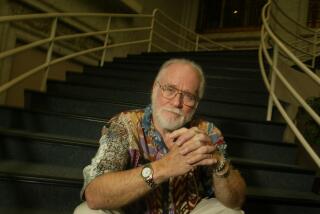William P. Foster dies at 91; conductor broke racial barriers and revolutionized marching band style
At the University of Kansas in the late 1930s, William P. Foster was barred from joining the marching band because he was black.
When he graduated in 1941, he aspired to direct a band but the school’s dean of music told him “there were no jobs for colored conductors,” Foster told Florida’s Sarasota Herald-Tribune in 1998.
He took those discouraging words as a challenge to create his own band, he later said.
In 1946 he founded the Florida A&M Marching 100 band, and over the next 50 years turned it into one of the best college bands in the nation as he popularized high-step marching and swinging showmanship.
Foster died Saturday of pneumonia at a Tallahassee, Fla., hospital, said a university spokeswoman. He was 91.
He helped revolutionize marching-band style by introducing the sounds and dance moves of black popular culture into halftime shows at the historically black university.
“Dr. Foster had an indelible impact on college marching bands,” Frank Wickes, the longtime director of Louisiana State University’s marching band, told The Times in an e-mail. “He pioneered the high-energy style which was emulated by the majority of African American university marching bands nationwide.”
The band’s style became internationally famous under his leadership. “They were legendary,” said Paula Crider, president of the American Bandmasters Assn., a group that Foster had also presided over.
By the 1970s many of the dominant bands in the country incorporated Foster’s techniques, according to a 2003 San Jose Mercury News interview with Darryl Lassiter, who made the film “Pay the Price” about a marching band at a fictional black college.
Foster combined precise marching formations with snazzy dance steps, singing and strutting.
In 1989 the band was chosen by France to be the sole U.S. representative in a Paris parade celebrating the bicentennial of the French Revolution. They marched and danced to James Brown tunes.
“There’s a psychology to running a band,” Foster told the New York Times in 1989. “People want to hear the songs they hear on the radio; it gives them an immediate relationship with you. And then there’s the energy. … Dazzle them with it.”
William Patrick Foster was born Aug. 25, 1919, in Kansas City, Kan., to a railway clerk and his wife.
He took up the clarinet at 12 and in high school was student director of the band. When he was 17, he directed an all-city band in Kansas City.
He enrolled at the University of Kansas “to get a good education” and when segregation prevented him from fully participating, Foster held his “head high” and “worked toward the next achievement,” he told the Wichita Eagle in 2006.
After receiving his bachelor’s degree in music education, he earned a master’s in 1950 from Wayne State University in Detroit and a doctorate in 1955 from the Teachers College at Columbia University.
He directed high school and college bands, including at the Tuskegee Institute in Alabama, before joining Florida A&M University.
When he formed the Marching 100, he coined the name as a goal for membership, and the band continues to use the name even though it has grown to more than 400 members.
He directed the McDonald’s All-American High School Band for a dozen years beginning in 1980.
He also wrote two books, “Band Pageantry” (1968), which was widely used as a handbook to his distinct style, and a memoir, “The Man Behind the Baton,” published after he retired in 1998.
Band members called their charismatic director “the Law,” because he wanted them to do it his way or not at all.
Foster’s wife of 68 years, Mary Ann, died in 2007. He is survived by two sons, William and Anthony, four grandchildren and five great-grandchildren.
valerie.nelson@latimes.com
More to Read
Start your day right
Sign up for Essential California for the L.A. Times biggest news, features and recommendations in your inbox six days a week.
You may occasionally receive promotional content from the Los Angeles Times.







